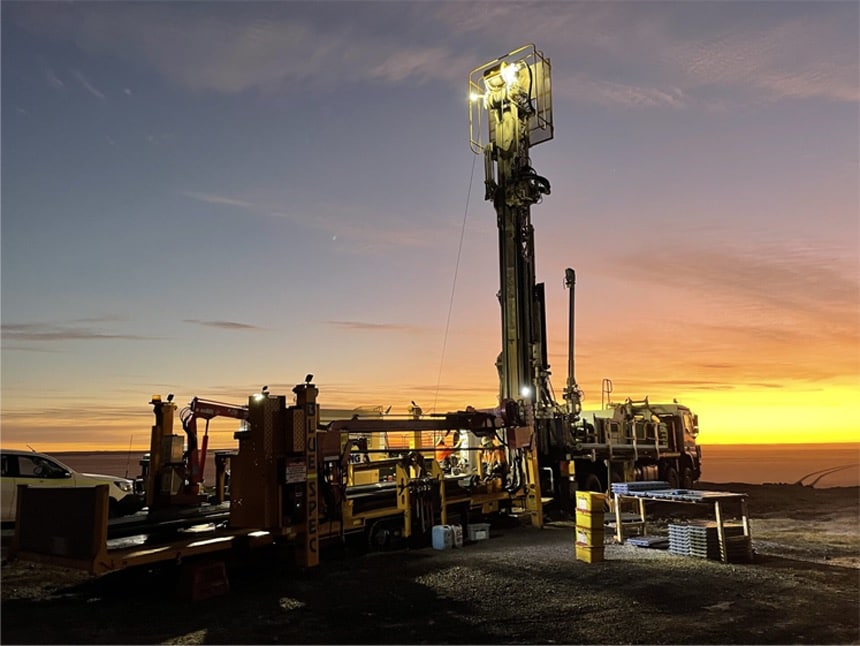

Foster Nickel Mine
Project Overview
Foster nickel mine was mined by WMC between 1981/82 and 1994. The nickel trough systems accessed underground at this mine produced over 60,000 tonnes of nickel metal. Foster’s nickel production represented up to 30% of the feed at WMC’s Kambalda Concentrator during its peak production period. Lunnon Metals has completed a reinterpretation of the mine environment and considers that the central and upper flank areas of the main mine represent an excellent extensional discovery opportunity, together with a new interpretation of the orientation and structural setting of the deeper parts of the trough that create opportunities for discovery proximal to existing mine development. The mine is host to four distinct nickel mineralised surfaces or shoots that contain current Mineral Resources reported in accordance with JORC 2012 guidelines and approximately 45 sub-surfaces that play host to historical nickel mineralisation when the mine closed in 1994.


Foster Main
Excluding areas of the mine where mineralisation has now been estimated in accordance with the JORC 2012 guidelines and reported as Mineral Resources (namely Foster 85H, S16C/N14C, South and Warren Shoots) significant nickel metal was still reported by WMC at the time of closure in 1996. Note this original historical WMC figure is not capable of being reported under JORC 2012 guidelines.
- Historical estimate figure is presently not capable of being reported under JORC 2012 guidelines;
- A Competent Person has not done sufficient work to classify the historical estimates as Mineral Resources or Ore Reserves in accordance with the JORC Code; and
- It is uncertain whether, following evaluation and/or further exploration work, the historical estimates will subsequently be able to be reported as Mineral Resources or Ore Reserves in accordance with the JORC Code.
Though challenging to assess and estimate, owing to the uncertainty in detail of what has been historically mined or left behind as remnant mineralisation, the main Foster Mine itself is a key target for potential growth in the Mineral Resource. The Company will focus on a thorough review of the extensive diamond drill core and pulp rejects library available at Kambalda, with a view to determining if noteworthy quantities of this remnant mineralisation may have the potential to be re-estimated in accordance with the JORC 2012 and potentially safely exploited in any future re-start and production scenario at the mine.
85H
The 85H surface is a major hangingwall ore surface associated with the base of the interpreted second main ultramafic flow at Foster. It is characterised as an extensive, very planar structure of irregular low-high tenor variation within the mineralisation.
Partially developed on the historical 8, 9 and 10 Levels at Foster, but essentially unmined, the Company interprets this hangingwall mineralised surface to have the potential to extend to the south of the current development and up dip, where programs to test for 85H style nickel anomalism can be executed with surface RC drilling.
Foster South (64C)
Originally termed South, then renamed “Deeps – 64C” by WMC, the Foster South trough is believed to be either a fault offset segment of the main Foster trough system rotated to a more vertical plunge, or a potential new trough in its own right. The high grade massive sulphide hosted there is, under the Company’s current interpretation, open up and down plunge and is located just 300 metres beyond the end of the current main decline.
The up dip/plunge portions of the South minerlisation will be tested by both new surface diamond drilling together with the re-entry and DHTEM testing of historical WMC era surface holes seeking to intersect or locate concentrations of nickel sulphides in this trough.
Warren
Previously termed Foster NW by WMC, the area was accessed by an independent decline branching off the main Foster decline near to its portal, and limited development and stoping occurred before an uncontrolled water ingress required the area to be blocked off.
It is interpreted that the Warren Shoot ore trough runs sub-parallel to, potentially, the entirety of the Foster Main trough and may be a significant source of future nickel discovery in its own right. Once more, the up dip/plunge portions of the Warren trough will be tested by new RC and surface diamond drilling.
N75C
The N75C is a flanking basal contact surface located up-dip from the main incised Foster nickel channel. The nickel mineralisation itself is of moderate nickel grade largely characterised as 5-40% disseminated nickel sulphides increasing in intensity towards the base where there can be a narrower zone of stringer to massive nickel sulphides.
The N75C mineralisation is part of an extensive flanking position surface on the basal contact extending up-dip (up-flank) from the main Foster channel and sits stratigraphically below the 85H hanging wall mineralised surface detailed above.
S16C/N14C
The S16C/N14C mineralisation is part of an extensive suite of mineralised surfaces at Foster that are in a flanking position at the base of the Kambalda Komatiite on the Lunnon Basalt footwall contact, which is interflow sediment covered in the case of S16C and partially sediment covered for N14C.
This flanking position extends up-dip (up flank) from the main Foster channel. The S16C/N14C surface is on the footwall side of a late intermediate dyke which splits this surface from the N75C mineralised surface (reported to the ASX on 22 April 2022).
Sign Up for ASX Alerts and News to receive the latest updates, insights, and developments directly to your inbox.